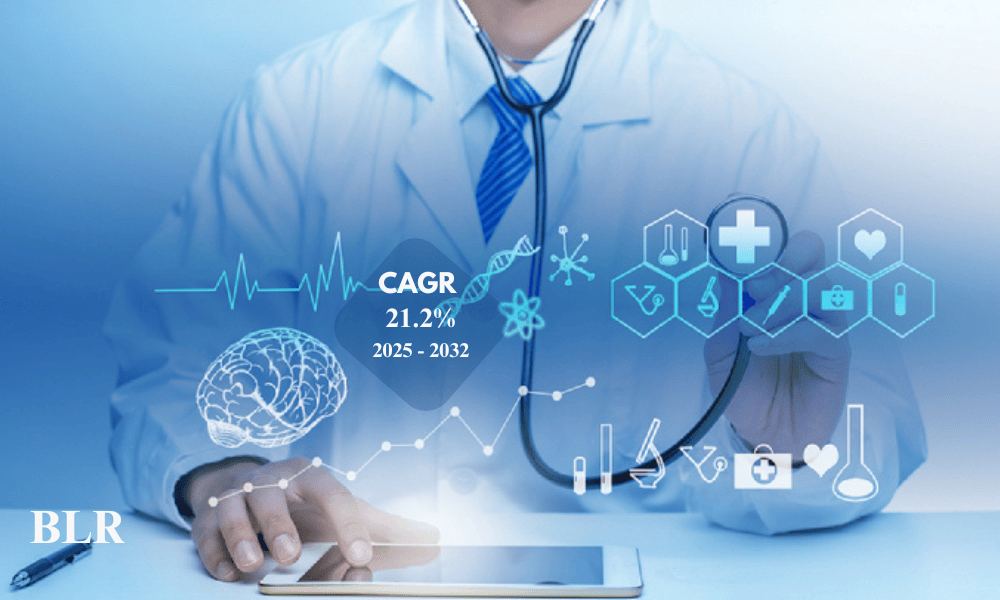Key Highlights
- Global Healthcare Analytics Market to grow at a CAGR of 21.2%, reaching USD 177.18 billion by 2032.
- EHR adoption and AI-powered predictive analytics drive patient care improvements and operational efficiency.
- Asia Pacific emerges as the fastest-growing region, while North America continues to lead in market share.
According to a new report from Coherent Market Insights, the healthcare analytics market is entering a rapid expansion phase. Valued at USD 46.12 billion in 2025, the Global Market is expected to climb to USD 177.18 billion by 2032, reflecting a robust CAGR of 21.2%.
Key growth drivers include rising adoption of electronic health records (EHRs) and the integration of artificial intelligence into clinical workflows. Predictive and prescriptive analytics are helping providers anticipate patient risks, close care gaps, and improve decision-making, reinforcing the market’s momentum.
Rising EHR Adoption and Data Volumes
With more than 88% of U.S. physicians now using EMR/EHR systems, digital health platforms and wearable devices are generating unprecedented data volumes. This surge is fueling demand for healthcare analytics software, which can improve patient outcomes, streamline hospital operations, and lower costs.
Market Barriers: Cybersecurity and Costs
Despite its promise, the market faces challenges. Cybersecurity remains a key concern, with the U.S. Department of Health and Human Services reporting over 300 healthcare data breaches in the first half of 2025. Additionally, high implementation costs limit adoption among smaller providers, slowing market penetration in certain regions.
Policy Support and Industry Shifts
Government initiatives such as the HITECH Act and the Affordable Care Act in the U.S. are spurring healthcare IT adoption. Globally, similar policies promote better care coordination and reduce inefficiencies, supporting overall healthcare analytics market trends.
Impact of AI on the Healthcare Analytics Market
The role of artificial intelligence in healthcare analytics is transformative. AI solutions enable real-time processing of massive datasets, supporting diagnostics, precision medicine, and population health management. They also help predict outbreaks, streamline clinical workflows, and enhance value-based care initiatives.
Regulatory momentum is also pushing adoption forward. The FDA’s 2025 guidelines for AI/ML-based Software as a Medical Device (SaMD) have set clear standards for real-world performance monitoring, further boosting confidence in AI-driven analytics.
Regional and Competitive Landscape
- North America will remain dominant, with the market projected to reach USD 17.66 billion by 2025.
- Asia Pacific is forecast to be the fastest-growing region, with a projected 24.2% market share in 2025, supported by rapid digital health adoption and expanding healthcare infrastructure.
Key players shaping the Healthcare Analytics Market Outlook include IBM, SAS, Optum, GE Healthcare, Cerner Corporation, Komodo Health, Health Catalyst, and Philips Healthcare. Notable industry moves, such as IQVIA’s AI-powered agents and Komodo Health’s MapLab Enterprise, reflect the market’s evolution toward full-stack analytics platforms.
Healthcare Analytics Market Outlook
The Global Healthcare Analytics Market is on a steep upward trajectory, powered by EHR adoption, AI integration, and value-based care models. At the same time, cybersecurity threats and high costs present obstacles, but regulatory backing and cloud-based innovations are expected to sustain long-term growth.
By 2032, Healthcare Analytics Software will be central to delivering personalized, efficient, and data-driven care, making healthcare analytics an indispensable pillar of modern healthcare systems worldwide.


